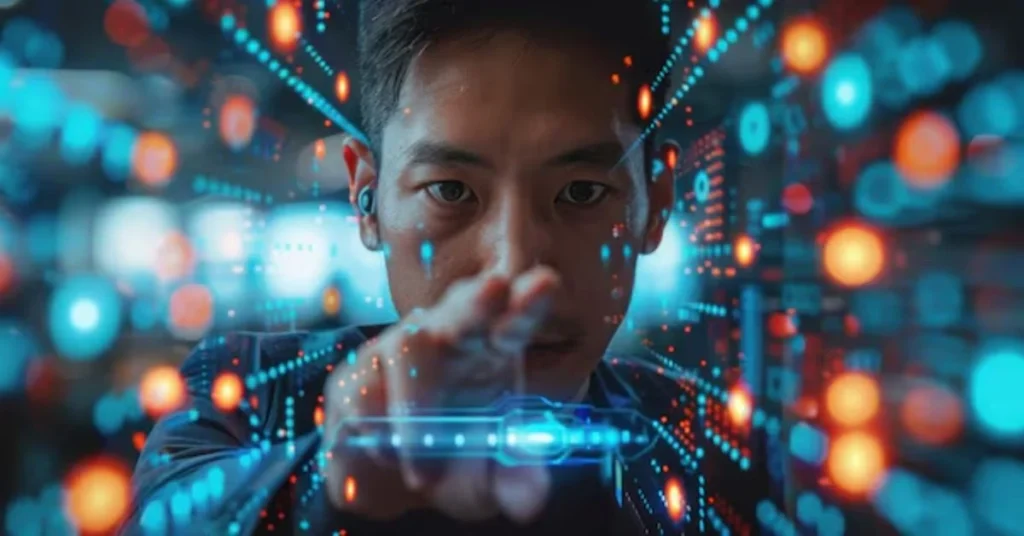In an era where the internet is no longer a luxury but a necessity, the gaps in digital access are more visible—and more damaging—than ever before. Enter WizzyDigital.org, an emerging force at the intersection of digital rights, community technology, and creative empowerment. While some organizations chase the next smart gadget, WizzyDigital focuses on something more foundational: making the digital age truly inclusive.
More than a nonprofit or tech start-up, WizzyDigital.org represents a philosophy. It reimagines who builds digital futures, who owns them, and how the benefits of connectivity should be distributed. With roots in community organizing and a footprint expanding across the Global South, the platform offers not just access, but agency.
This article takes a deep look into WizzyDigital.org: its mission, model, tools, and the communities it’s reshaping in real time.
The Mission: Digital Justice, Not Just Digital Access
WizzyDigital.org was founded on a single, expansive belief: the digital revolution has excluded too many people from its benefits, and the future must be more democratic. Founded in 2019 by a coalition of technologists, educators, and human rights activists, the platform works to close the digital divide in ways that reflect justice, not charity.
Core Objectives:
- Provide equitable internet access in rural and marginalized urban areas
- Support community ownership of digital infrastructure
- Foster digital literacy that includes creativity, privacy, and ethical tech use
- Advocate for policies that protect the rights of digital citizens
Unlike traditional development models, WizzyDigital favors what it calls “participatory infrastructure”: technology systems designed, maintained, and governed by the communities they serve.
How It Works: Decentralized and Context-Driven
WizzyDigital.org doesn’t drop off laptops or install Wi-Fi in isolation. Its model is embedded and collaborative, typically involving a multi-phase process:
- Community Tech Audits: Working with local leaders to map current infrastructure, cultural needs, and tech habits.
- Co-Design Workshops: Residents participate in designing access points, choosing hardware/software, and identifying digital literacy goals.
- Deployment and Training: Networks are installed, and training sessions are held on everything from router maintenance to content creation.
- Local Stewardship Networks: Volunteers and paid tech stewards maintain systems and hold quarterly assemblies on digital governance.
The result is a system that isn’t just placed on top of a community but rooted in it.

Technology with Purpose
WizzyDigital.org operates with a clear tech philosophy: open-source first, proprietary last. The platform works with modular hardware and flexible codebases that allow local adaptation and innovation.
Tools and Systems:
- Mesh Wi-Fi networks that function even without a central ISP
- Digital content servers that store local education and media offline for use in bandwidth-limited areas
- Encryption education modules to protect user privacy in oppressive regimes
- Solar-powered connectivity hubs where grid electricity is unstable
These tools are paired with intuitive user interfaces and hands-on support, making them usable even for first-time internet users.
WizzyCreative: The Cultural Arm
WizzyDigital.org isn’t only concerned with access; it is equally focused on what happens once people are connected. WizzyCreative is the content and media wing of the platform, helping users:
- Launch digital storytelling projects
- Start community podcasts
- Use tools like Canva, Audacity, and open-source film editors
In regions where mass media often excludes local voices, WizzyCreative enables people to become content creators, historians, and journalists of their own experience.
Notable Initiatives
1. The Ghana Mesh Project
In rural Volta, WizzyDigital worked with teachers, farmers, and youth leaders to build a community mesh network that connects four villages. Digital classrooms now run open-source learning platforms, and local farmers share market data via encrypted chat apps.
2. WiFree Favelas in Rio
Collaborating with grassroots collectives, WizzyDigital helped install encrypted, solar-powered internet points in Rio’s underserved neighborhoods. The project now supports remote schooling, women-led businesses, and media watchdog groups documenting police activity.
3. Southeast Asia Women Coders Fellowship
In partnership with digital rights groups, WizzyDigital hosts annual cohorts of young women learning full-stack development, cybersecurity, and digital ethics, with alumni now leading local tech projects in Vietnam, Indonesia, and Cambodia.
The Policy Dimension: Advocacy Meets Infrastructure
WizzyDigital.org understands that technology is not neutral. The platform actively works to influence digital rights policies through:
- Research publications on surveillance and censorship
- Advocacy coalitions around net neutrality
- Testimonies before regional policy councils and internet governance forums
They advocate for “minimum digital dignity standards,” which include bandwidth guarantees, freedom from targeted surveillance, and public digital ownership models.
Transparency and Funding
WizzyDigital is funded through a blend of public grants, philanthropic partnerships, and a growing network of community donors. Annual reports are published openly and include:
- Project audits with community feedback
- Impact dashboards (e.g., new users connected, hours of training completed)
- Future budget plans and strategic priorities
Governance Model: Decentralized Yet Accountable
The organization uses a distributed governance model that includes:
- Regional advisory boards
- Community liaison representatives elected annually
- Transparency portals with open documentation on expenditures, data use, and project decisions
This structure allows WizzyDigital to scale without centralizing power, echoing the decentralized nature of the internet itself.
Criticism and Challenges
Like all ambitious efforts, WizzyDigital faces real challenges:
- Balancing open access with content moderation in politically sensitive areas
- Training sustainability as volunteers move or lose interest
- Bandwidth bottlenecks due to ISP throttling in semi-urban zones
Critics also raise questions about:
- Long-term funding independence
- Capacity to remain neutral in polarized regions
- Cultural adaptation of open-source software developed in the Global North
WizzyDigital takes these seriously, hosting regular “Red Team” audits where external experts are invited to critique systems, with reports published online.
Educational Legacy
Through WizzyLearn, the group provides:
- Open educational resources (OERs)
- Training materials in over 30 languages
- Digital literacy bootcamps for elders, youth, and microentrepreneurs
Its digital learning library is now used by over 400 informal schools and community centers worldwide.
The Future of WizzyDigital.org
The roadmap ahead includes:
- A mobile-first OS for ultra-low-bandwidth contexts
- Expansion into disaster-prone zones for emergency communications
- Collaborations with urban developers to integrate public Wi-Fi into smart city infrastructure
- Certification programs in community tech facilitation
There are also talks underway with space-based internet providers to pilot hybrid satellite-mesh solutions in landlocked communities.
Why WizzyDigital.org Matters Now
The digital age promised universality. But in practice, billions remain disconnected or exploited. WizzyDigital.org asks the question: What if we rebuilt the digital world, starting from the margins?
It doesn’t only fight for access to the internet, but for access to ownership, voice, and visibility. It teaches that connectivity without context can replicate old injustices. And that real digital justice is rooted not in technology alone, but in solidarity.
In the expanding ecosystem of global tech, WizzyDigital.org reminds us that the future is not just made in labs and boardrooms. It is also crafted in schoolyards, farms, urban backstreets, and village halls—where connectivity becomes community, and data becomes dignity.
For more information, click here.









